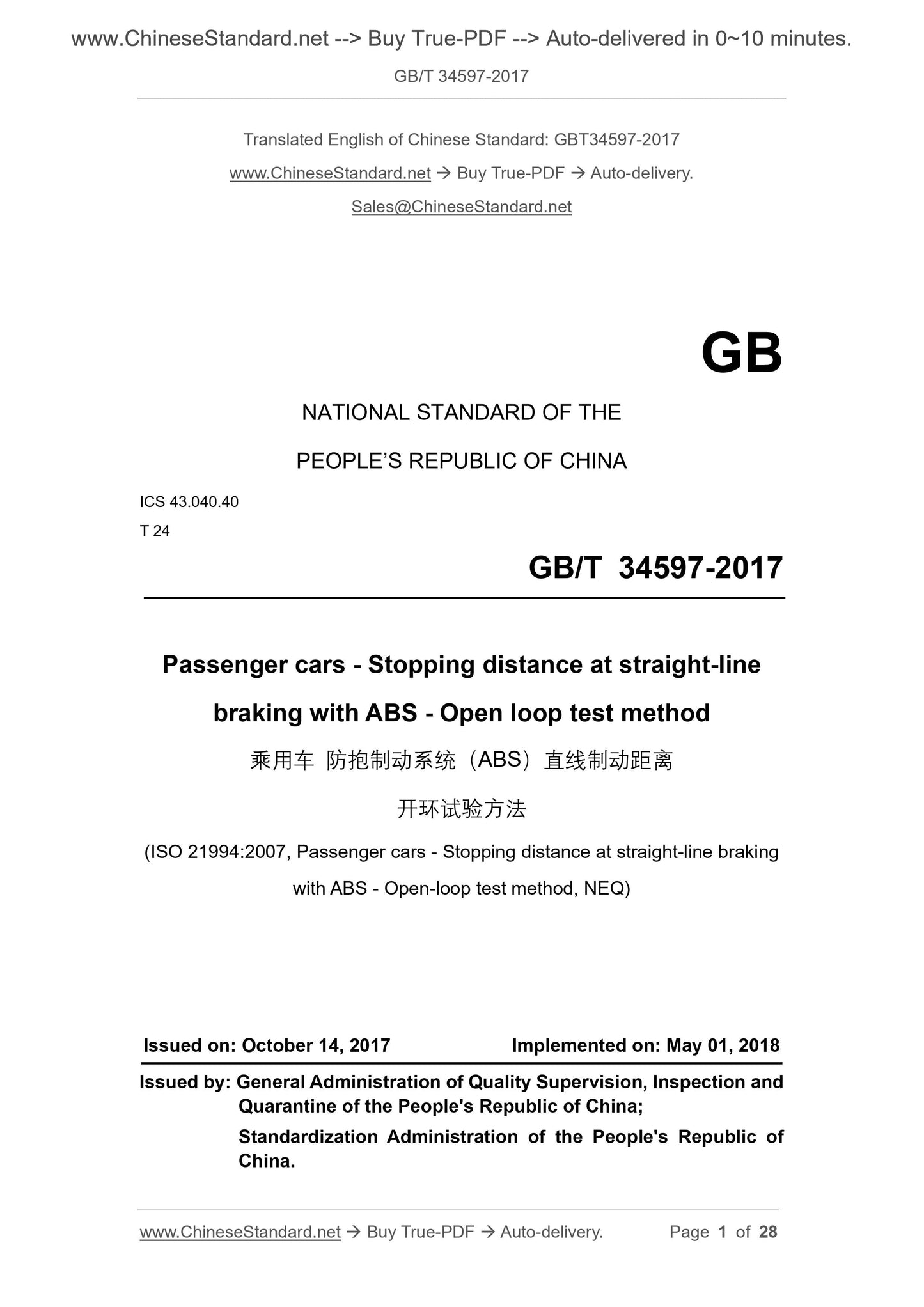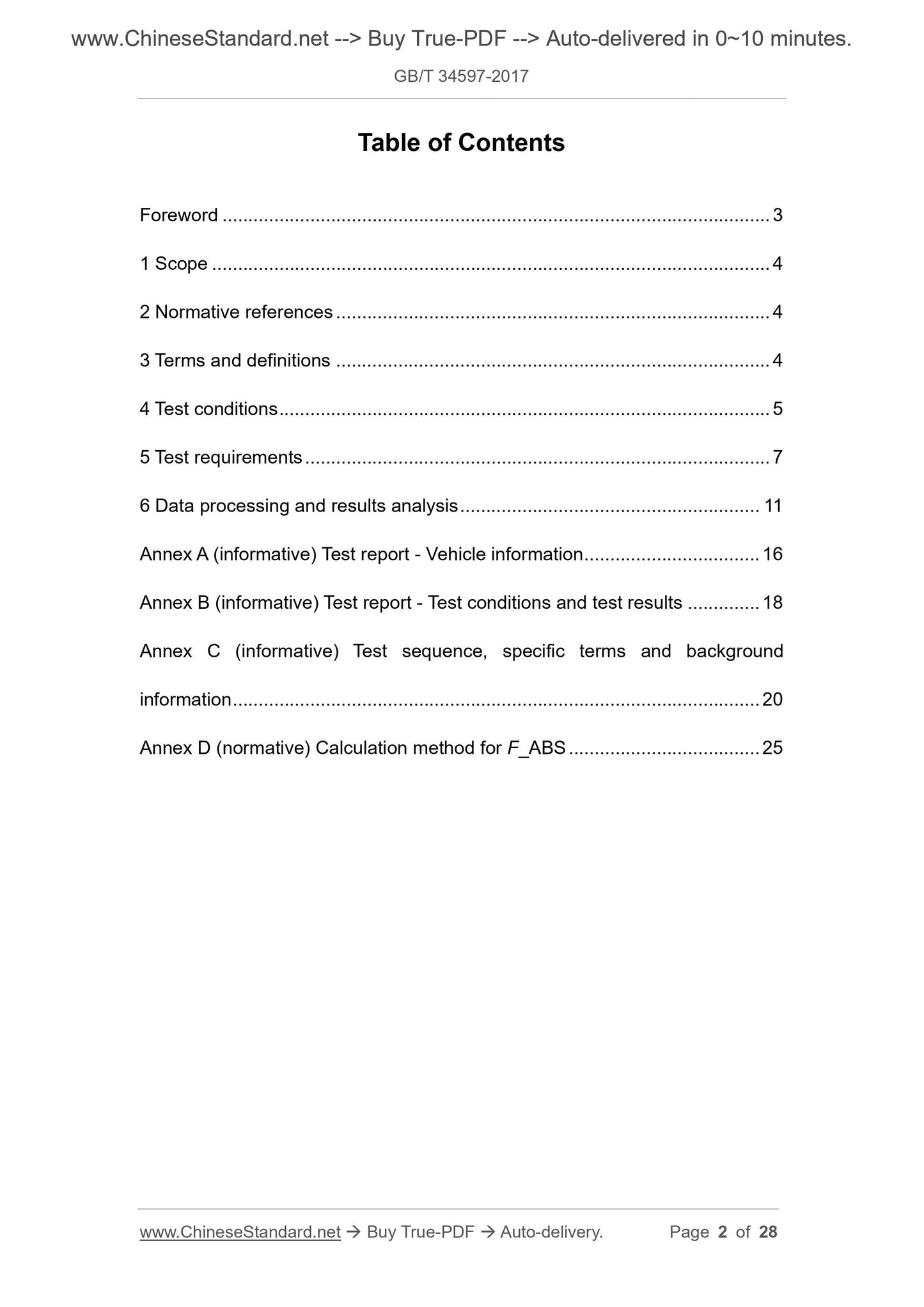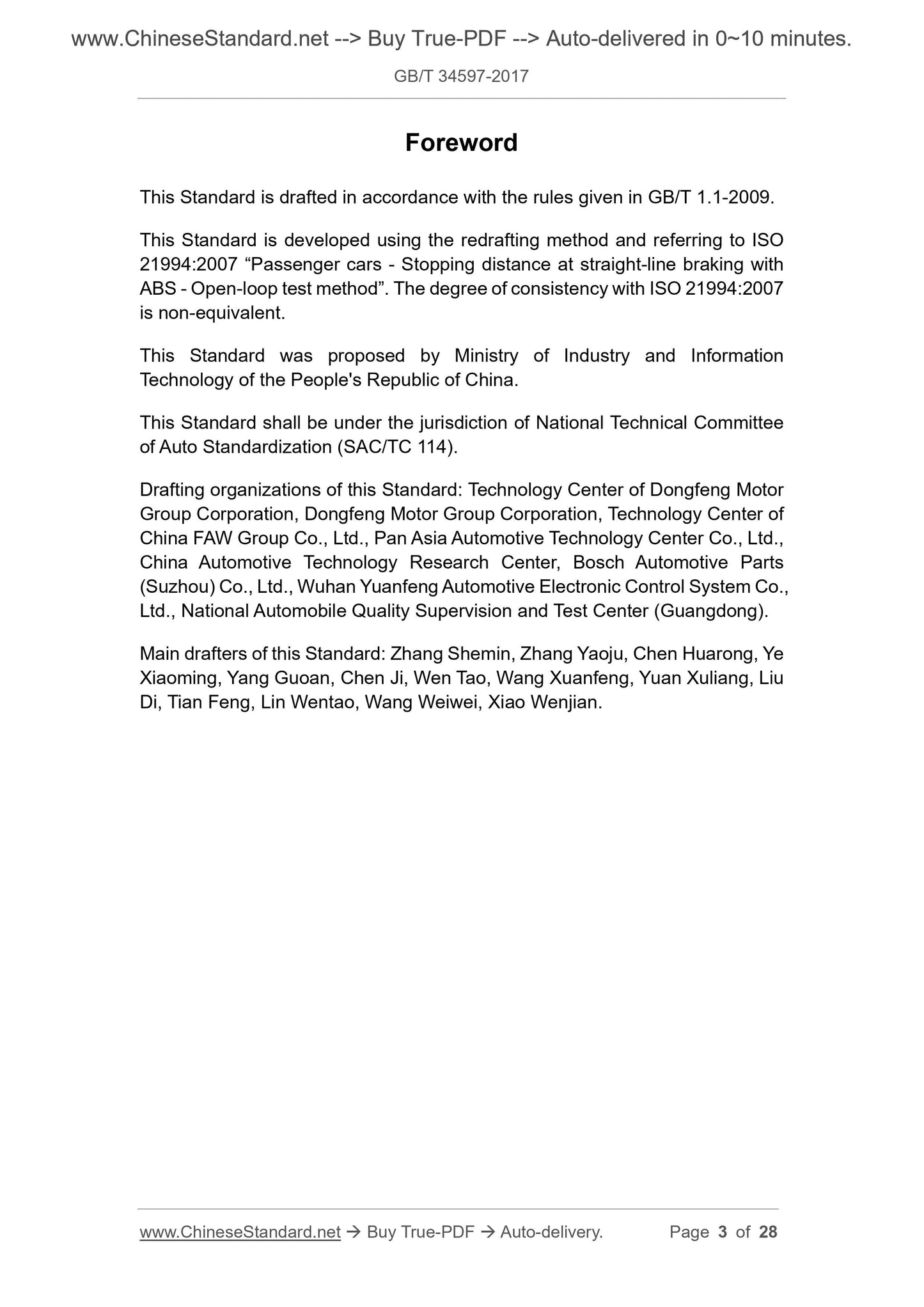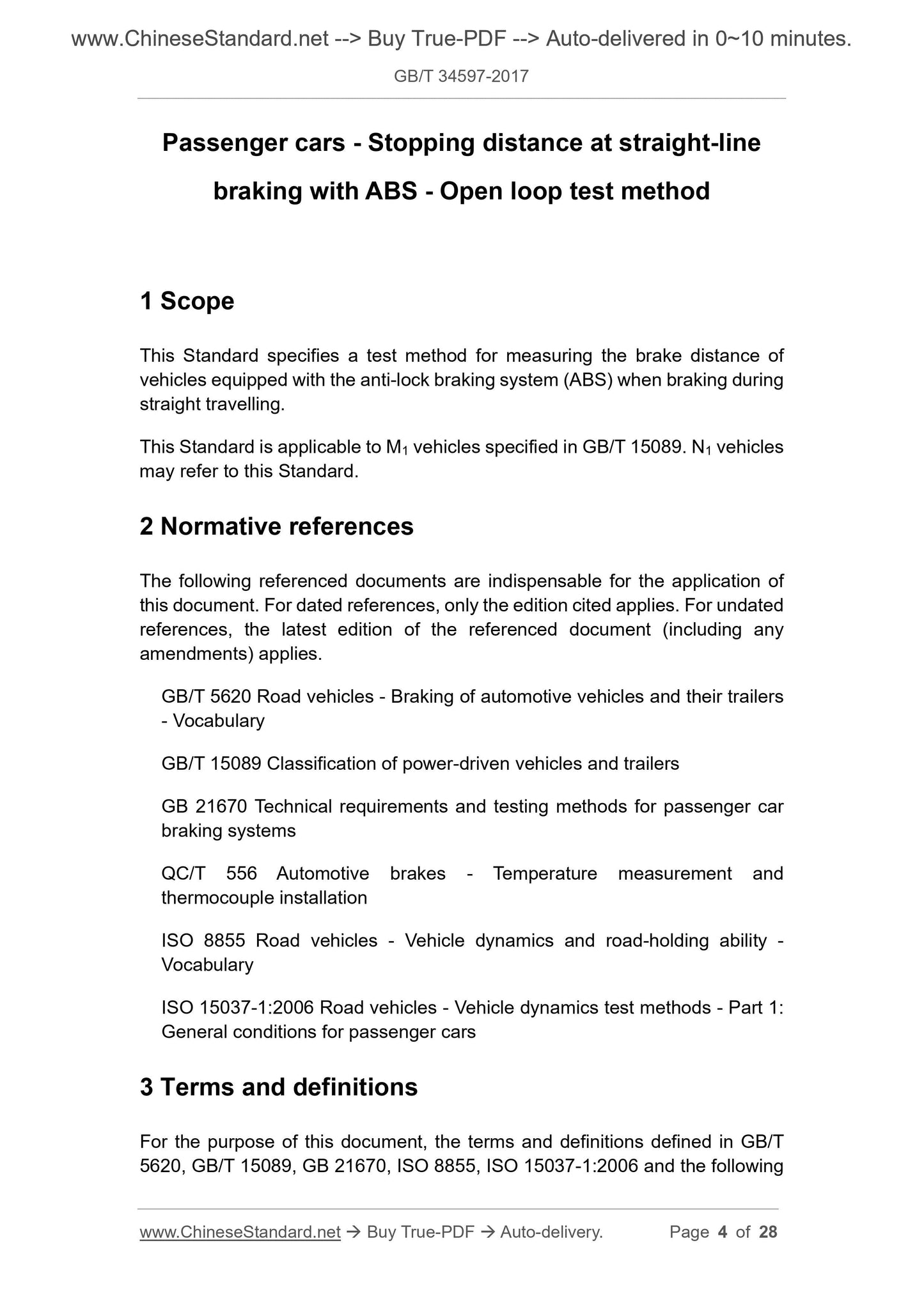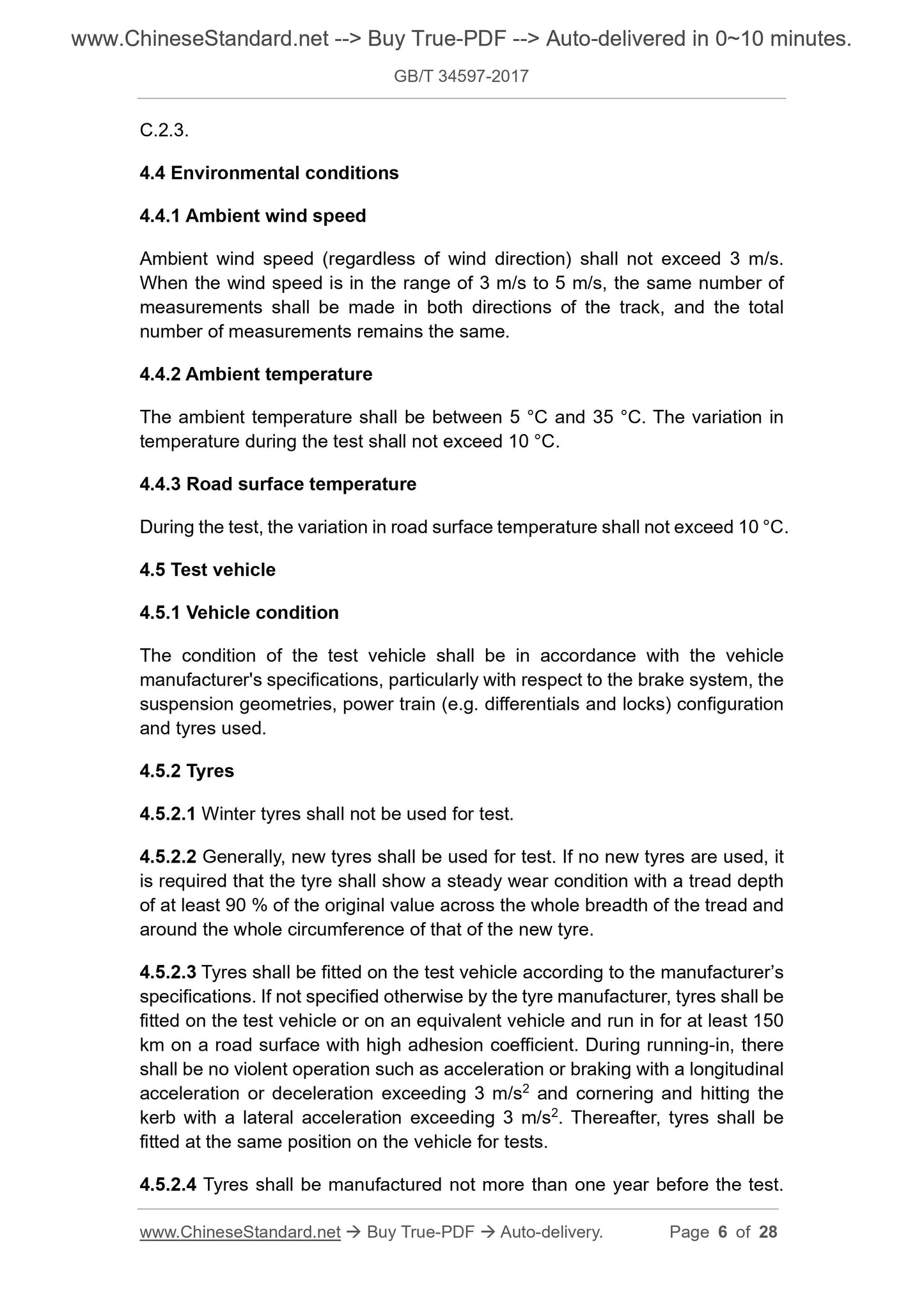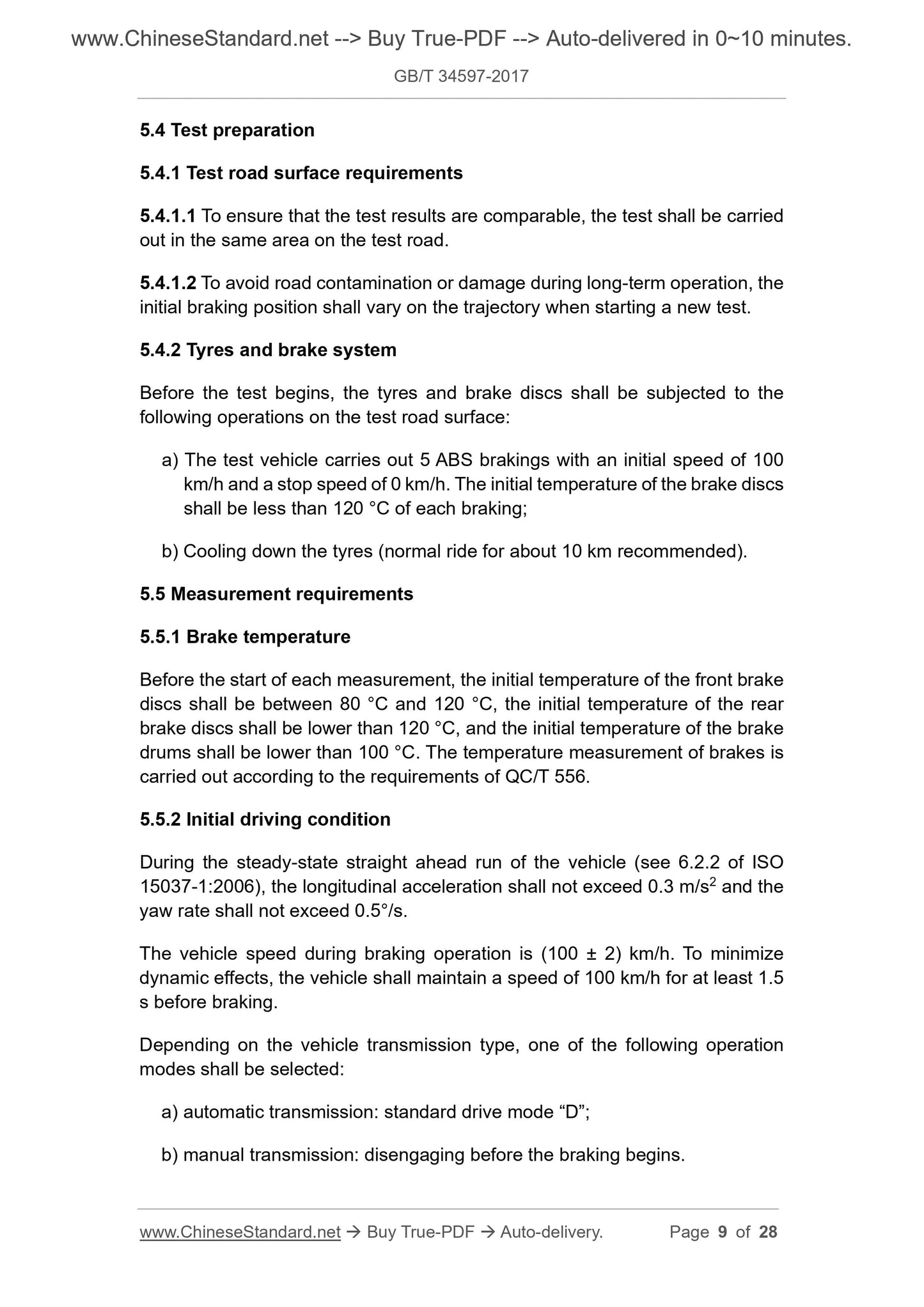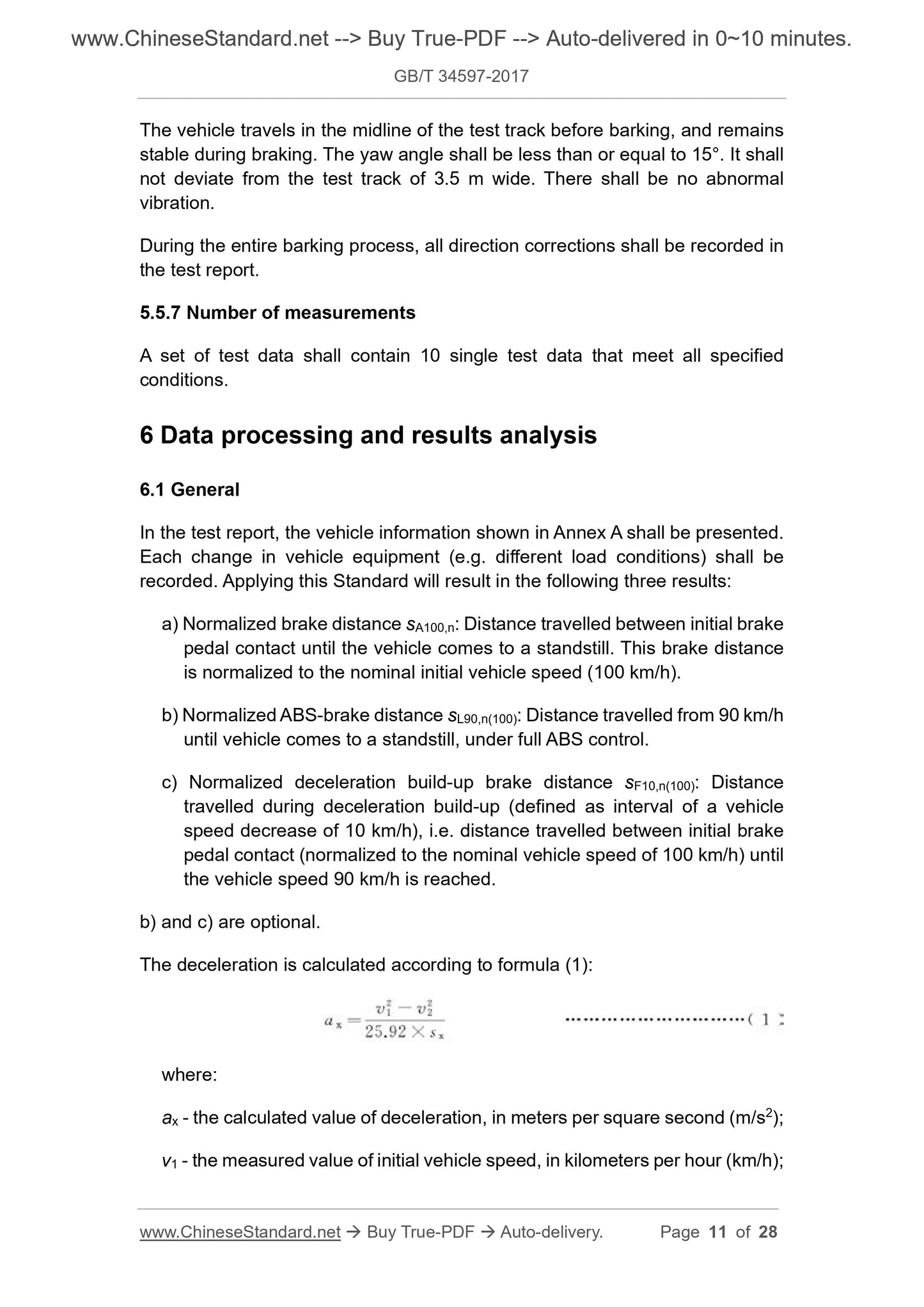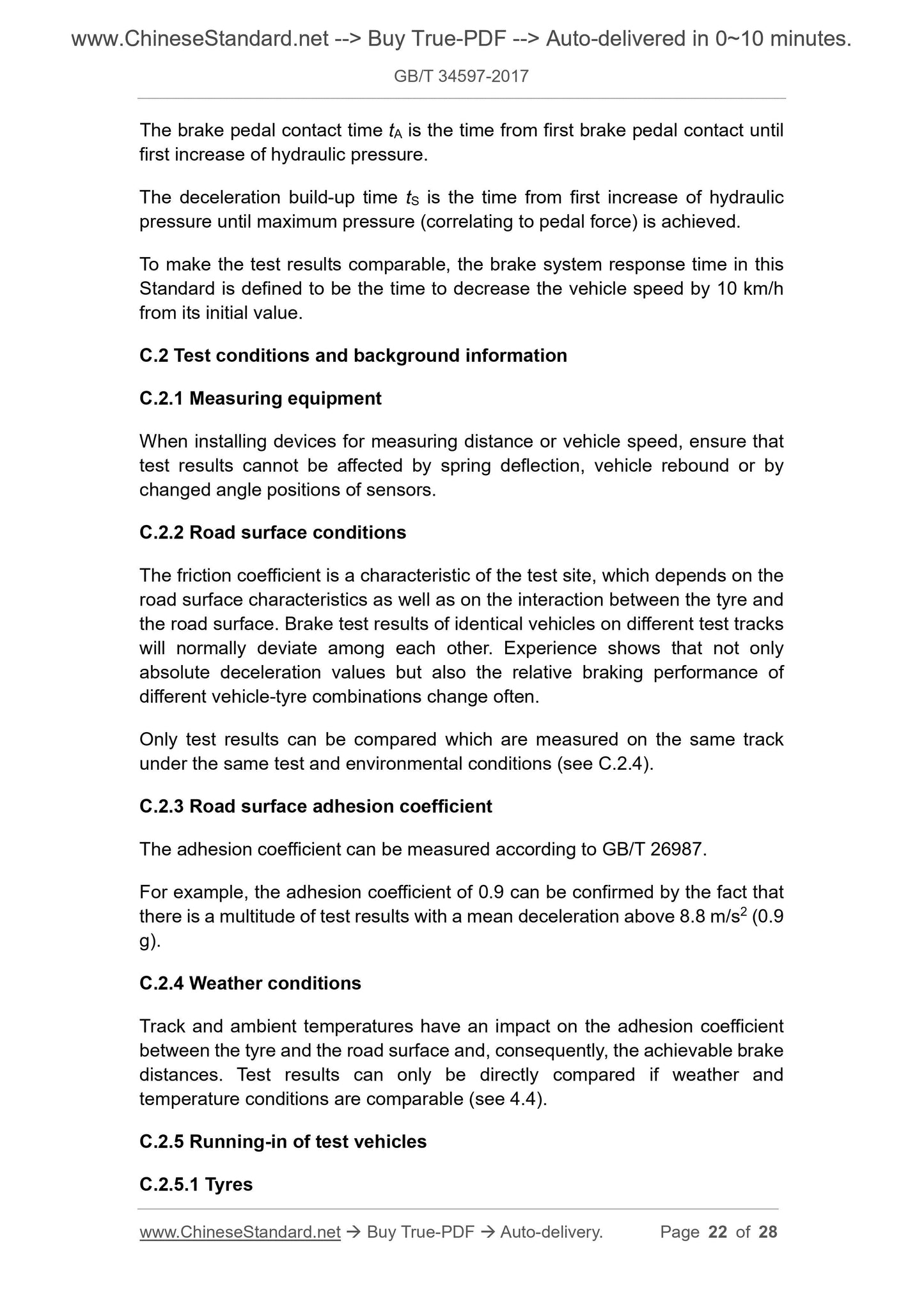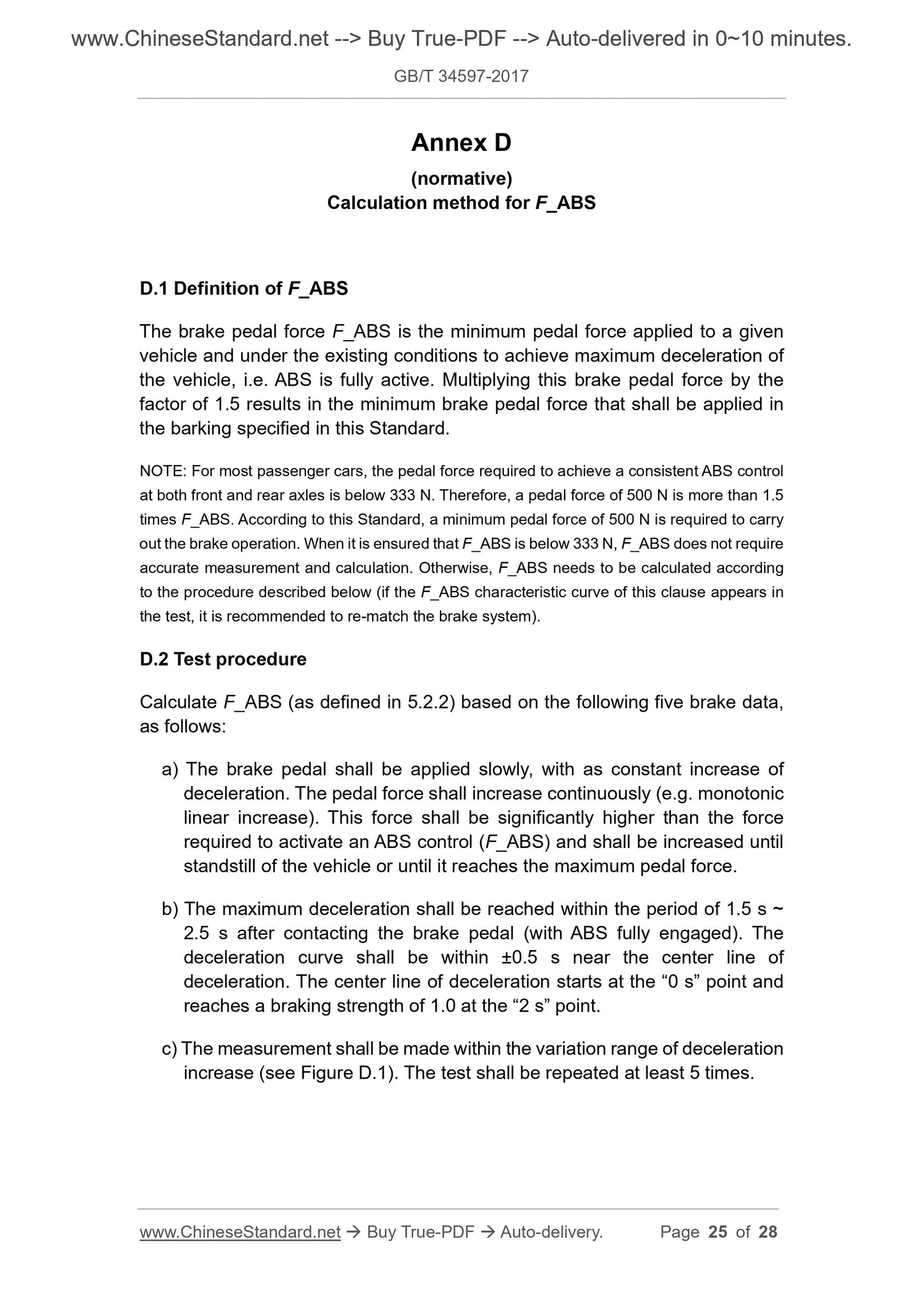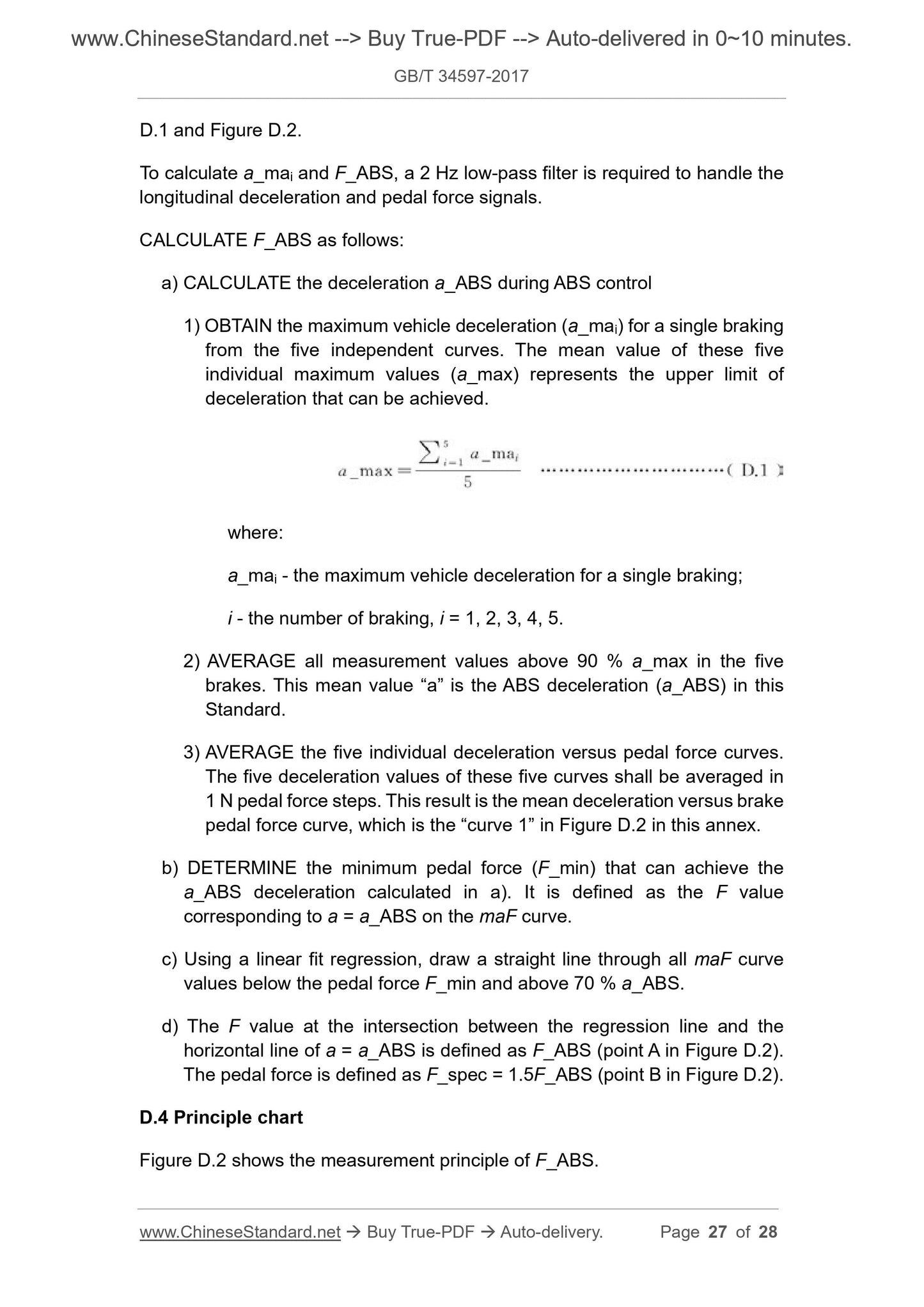1
/
of
10
www.ChineseStandard.us -- Field Test Asia Pte. Ltd.
GB/T 34597-2017 English PDF (GB/T34597-2017)
GB/T 34597-2017 English PDF (GB/T34597-2017)
Regular price
$150.00
Regular price
Sale price
$150.00
Unit price
/
per
Shipping calculated at checkout.
Couldn't load pickup availability
GB/T 34597-2017: Passenger cars -- Stopping distance at straight-line braking with ABS -- Open loop test method
Delivery: 9 seconds. Download (and Email) true-PDF + Invoice.Get Quotation: Click GB/T 34597-2017 (Self-service in 1-minute)
Newer / historical versions: GB/T 34597-2017
Preview True-PDF
Scope
This Standard specifies a test method for measuring the brake distance ofvehicles equipped with the anti-lock braking system (ABS) when braking during
straight travelling.
This Standard is applicable to M1 vehicles specified in GB/T 15089. N1 vehicles
may refer to this Standard.
Basic Data
| Standard ID | GB/T 34597-2017 (GB/T34597-2017) |
| Description (Translated English) | Passenger cars -- Stopping distance at straight-line braking with ABS -- Open loop test method |
| Sector / Industry | National Standard (Recommended) |
| Classification of Chinese Standard | T24 |
| Classification of International Standard | 43.040.40 |
| Word Count Estimation | 22,219 |
| Date of Issue | 2017-10-14 |
| Date of Implementation | 2018-05-01 |
| Issuing agency(ies) | General Administration of Quality Supervision, Inspection and Quarantine of the People's Republic of China, Standardization Administration of the People's Republic of China |
Share
